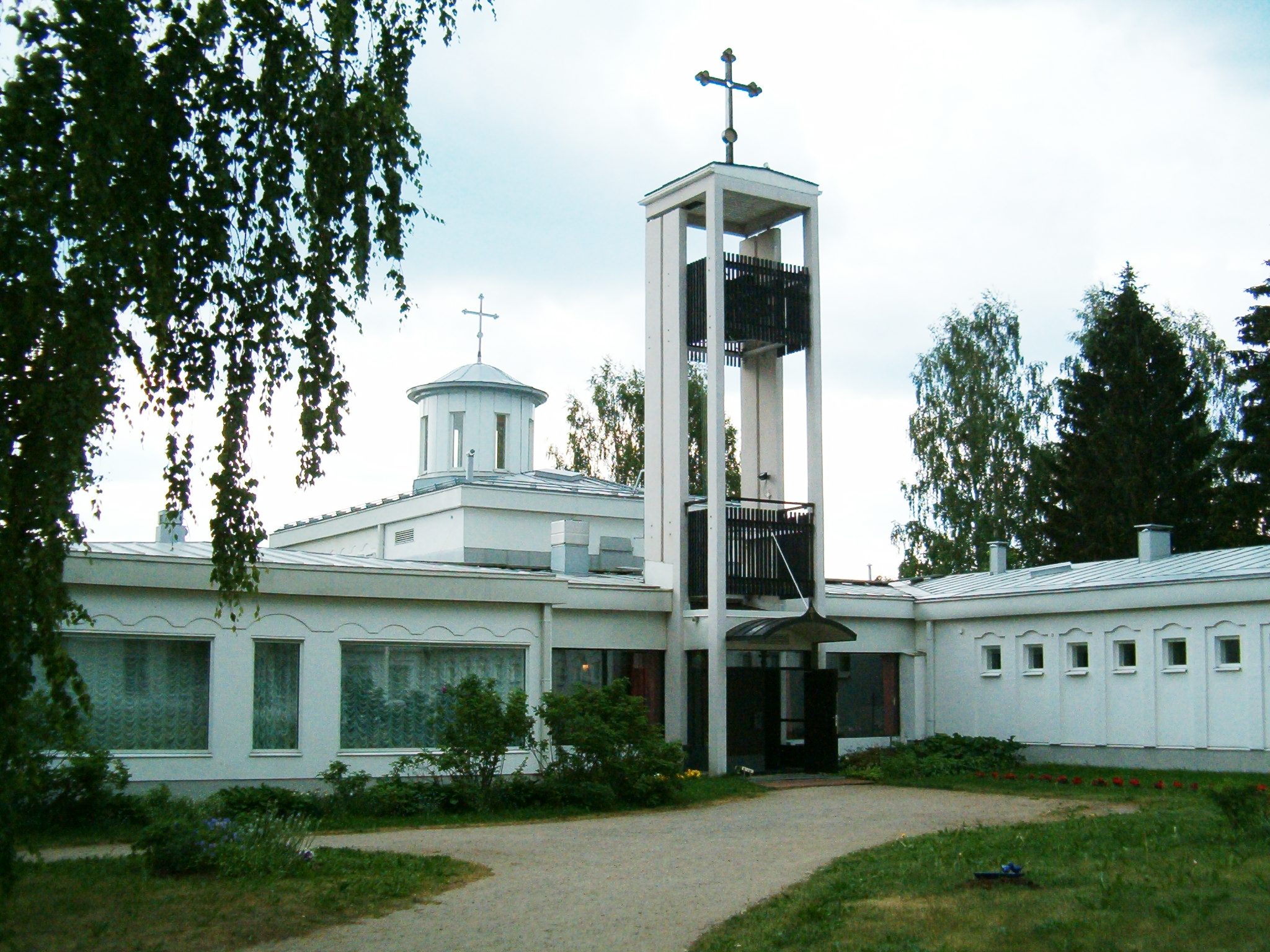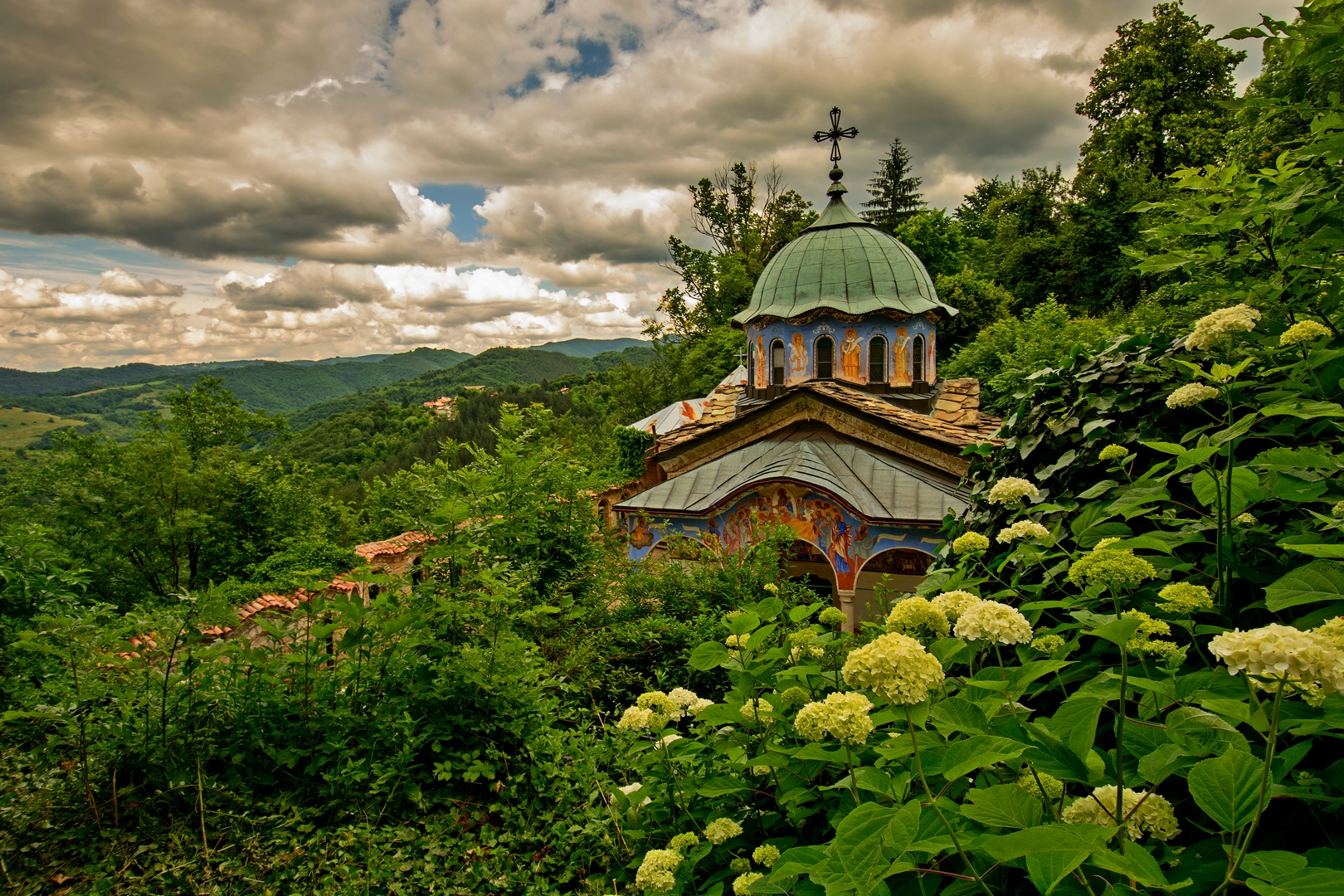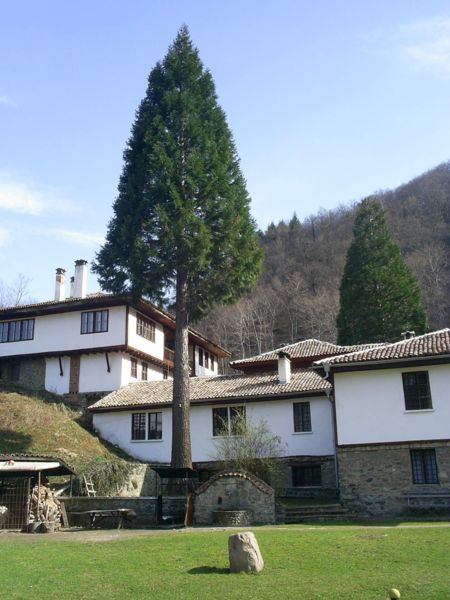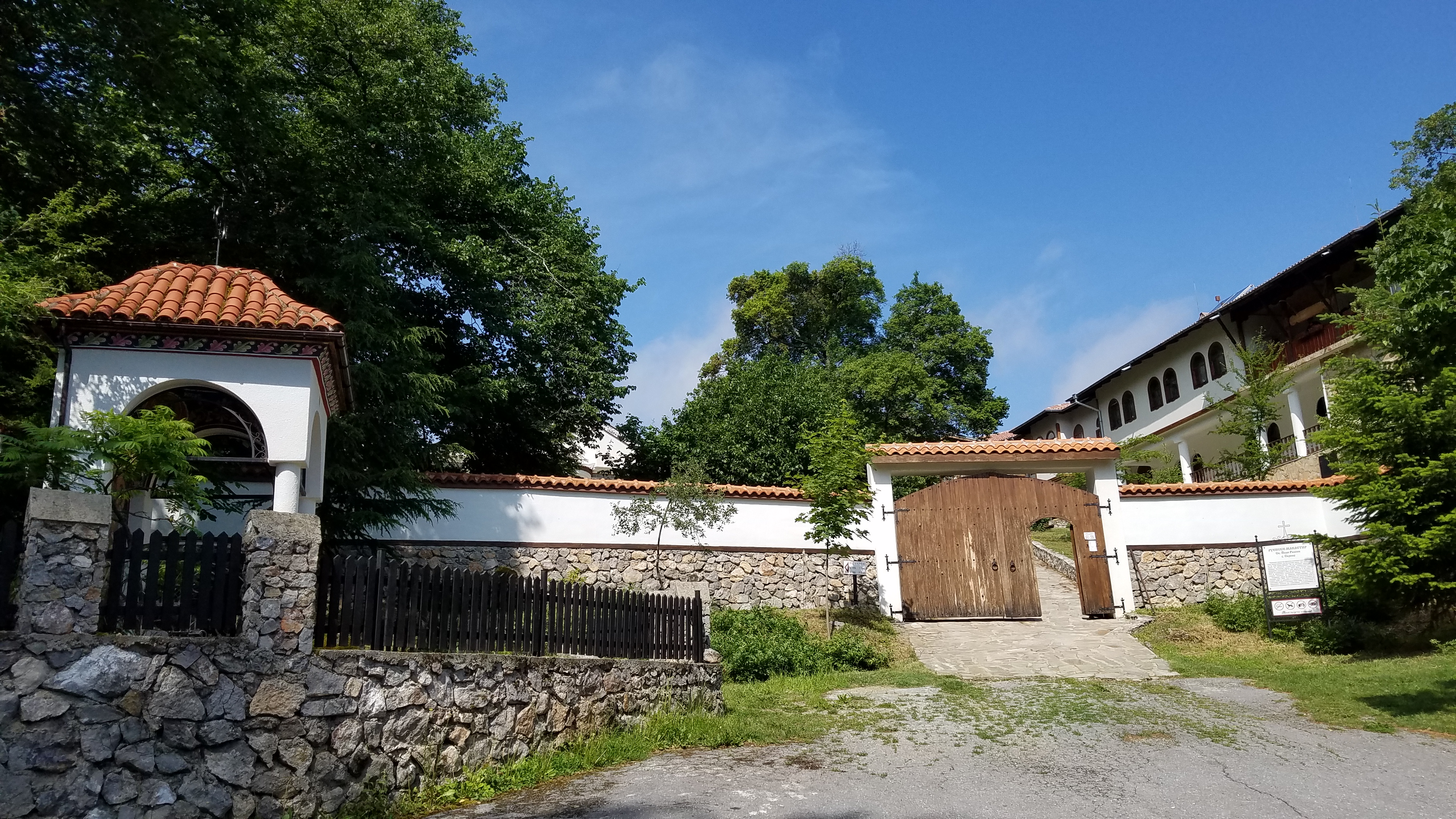|
List Of Eastern Orthodox Monasteries
This is a list of Eastern Orthodox monasteries that are individually notable. In Europe Albania * Ardenica Monastery * St. George's Monastery, Sarandë Bulgaria * Aladzha Monastery * Albotin Monastery * Arapovo Monastery * Bachkovo Monastery * Basarabi Cave Complex * Belashtitsa Monastery * Chiprovtsi Monastery *Dragalevtsi Monastery * Dryanovo Monastery * Etropole Monastery *Glozhene Monastery * Klisurski Monastery * Kremikovtsi Monastery *Lopushna Monastery * Monastery of Saint Athanasius *Patriarchal Monastery of the Holy Trinity *Peshtera Monastery *Rafail's Cross * Razboishte Monastery *Rila Monastery *Rozhen Monastery *Ruen Monastery * Seven Altars Monastery * Sokolski Monastery * Transfiguration Monastery *Troyan Monastery * Zemen Monastery England * Patriarchal Stavropegic Monastery of St. John the Baptist, Tolleshunt Knights, Essex Finland * Lintula Holy Trinity Convent *New Valamo France *Château de Saint-Hubert (Chavenon) Georgia * Alaverdi Monastery *Betania Monas ... [...More Info...] [...Related Items...] OR: [Wikipedia] [Google] [Baidu] |
Ardenica Monastery
The Monastery of the Nativity of the Theotokos in Ardenica ( sq, Manastiri Lindja e Hyjlindëses Mari,; or simply Ardenica Monastery ( sq, Manastiri i Ardenices) is an Eastern Orthodox monastery, located 18 kilometers south of Lushnjë, Albania, along the national road that links Lushnjë to Fier. Built by Byzantine Emperor, Andronikos II Palaiologos in 1282 after the victory against the Angevins in the siege of Berat, the monastery is famous as the place where, in 1451, was celebrated the marriage of Skanderbeg, the national hero of Albania, with Andronika Arianiti. In 1780 the Monastery started a theological school to prepare clerics in Greek Orthodoxy. It had an important library with 32,000 volumes that got completely burned by a fire in 1932. The Church of Saint Mary within the monastery contains frescos from brothers Kostandin and Athanas Zografi, notably one of saint John Kukuzelis, born in Durrës, Albania. History Scholars claim that the Byzantine Emperor, Andronikos ... [...More Info...] [...Related Items...] OR: [Wikipedia] [Google] [Baidu] |
Peshtera Monastery
The Peshtera Monastery of Saint Nicholas of Myra ( bg, Пещерски манастир „Свети Николай Мирликийски”, ''Peshterski manastir „Sveti Nikolay Mirlikiyski”''), also known as the Mraka Monastery (Мрачки манастир, ''Mrachki manastir'') or Oryahov Monastery (Оряховски манастир, ''Oryahovski manastir'') is a medieval Eastern Orthodox monastery in western Bulgaria, located in the Mraka area at the village of Peshtera, near Zemen, Pernik Province. , the monastery is not operative. The monastery was first mentioned in Tsar Ivan Alexander of Bulgaria's Oryahov Charter of 1 December 1348, which indicated that that particular tsar of the Second Bulgarian Empire had donated to the monastery. According to some researchers, the eastern part of the modern church dates to the 14th century, while others claim it belongs to the Mount Athos architectural type and is similar to Greek churches of the 16th-17th century, as wel ... [...More Info...] [...Related Items...] OR: [Wikipedia] [Google] [Baidu] |
New Valamo
New Valamo or New Valaam ( fi, Valamon luostari, or more informally, especially in the postal address: ''Uusi-Valamo'', sv, Valamo nya kloster, russian: Ново-Валаамский) is an Orthodox monastery in Heinävesi, Finland. The monastery was established in its present location in 1940. However, the tradition of the Valamo monastery dates back to 1717. The monastery was then originally established on Valaam (also known historically by the Finnish name ''Valamo'') which is an archipelago in the northern portion of Lake Ladoga, lying within the Republic of Karelia in the Russian Federation. The New Valamo Monastery is now an active centre of the Orthodox religious life and culture in Finland and welcomes visitors throughout the year. History The relocation of the monastery In 1939, during the Winter War, some 190 monks from the Valamo Monastery in Karelia were evacuated from their old abode on a group of islands in Lake Ladoga in the Viipuri Province to present Eastern ... [...More Info...] [...Related Items...] OR: [Wikipedia] [Google] [Baidu] |
Lintula Holy Trinity Convent
Lintula Holy Trinity Convent or Lintula Convent ( fi, Lintulan Pyhän Kolminaisuuden luostari or ; russian: Ли́нтульский Свято-Троицкий монастырь) is a small Orthodox Christian convent located in Palokki, Heinävesi, Finland, close to the New Valamo Monastery. The monastery was founded in 1895 on the isthmus of Karelia, in the parish of Kivennapa. In 1946, the Convent moved to Heinävesi. See also * List of Christian religious houses in Finland This is an incomplete list of Christian monasteries and religious houses, both extant and dissolved, in Finland, for both men and women. Catholic Dissolved * Dominican Priory, Turku (''Turun dominikaanikonventti'', ''Pyhän Olavin dominikaanik ... External links Lintula Conventby the Finnish Orthodox Church Heinävesi Eastern Orthodox monasteries in Finland 19th-century Christian monasteries Buildings and structures in South Savo 1895 establishments in Finland Orthodox Church of Fin ... [...More Info...] [...Related Items...] OR: [Wikipedia] [Google] [Baidu] |
Patriarchal Stavropegic Monastery Of St
Patriarchy is a social system in which positions of dominance and privilege are primarily held by men. It is used, both as a technical anthropological term for families or clans controlled by the father or eldest male or group of males and in feminist theory where it is used to describe broad social structures in which men dominate over women and children. In these theories it is often extended to a variety of manifestations in which men have social privileges over others causing exploitation or oppression, such as through male dominance of moral authority and control of property. "I shall define patriarchy as a system of social structures, and practices in which men dominate, oppress and exploit women." "There are six main patriarchal structures which together constitute a system of patriarchy. These are: a patriarchal mode of production in which women's labour is expropriated by their husbands; patriarchal relations within waged labour; the patriarchal state; male violen ... [...More Info...] [...Related Items...] OR: [Wikipedia] [Google] [Baidu] |
Zemen Monastery
The Zemen Monastery ( bg, Земенски манастир, ''Zemenski manastir'') is a Bulgarian Orthodox monastery located one kilometre away from the town of Zemen, Pernik Province in western Bulgaria. The monastery was established in the 11th century. It comprises a church, belfry and two residential buildings. It is currently uninhabited. The church is a monument of culture. The church dates from the foundation of the monastery in the late 11th century and has a cube shape, 9 metres long, 8 metres wide, 11.20 metres high. The material used was travertine. The altar is a stone monolith and the floor is made of colourful tiles. The church is richly painted inside, with two layers of frescoes, the scarcely preserved early one dating to the 11th century. The better preserved Biblical scenes date from the mid-14th century and include several portraits of donors: the first one depicting an unnamed man, his wife Doya and their two children, the second featuring a young man, Vitomir ... [...More Info...] [...Related Items...] OR: [Wikipedia] [Google] [Baidu] |
Troyan Monastery
The Monastery of the Dormition of the Most Holy Mother of God ( bg, Троянски манастир „Успение Богородично“) or, as it is more commonly called, the Troyan Monastery is the third largest monastery in Bulgaria. It is located in the northern part of the country in the Balkan mountains and was founded no later than the end of the 16th century. The monastery is situated on the banks of the Cherni Osam near Oreshak, a village 10 km from Troyan in Lovech Province, and is a popular tourist destination. The main church of the monastery was reconstructed near the end of Ottoman rule during the Bulgarian National Revival period by a master-builder called Konstantin in 1835. The ornate interior and exterior of the church were painted between 1847 and 1849 by Zahari Zograph, a popular Bulgarian painter of the time, who also painted the central church of the Rila Monastery, the largest monastery in Bulgaria. Many of the "moral and social experiments" ... [...More Info...] [...Related Items...] OR: [Wikipedia] [Google] [Baidu] |
Transfiguration Monastery
The Transfiguration Monastery ( bg, Преображенски манастир, ''Preobrazhenski manastir'') or the Monastery of the Holy Transfiguration of God (манастир "Свето Преображение Господне", ''manastir "Sveto Preobrazhenie Gospodne"'') is an Eastern Orthodox monastery located in the Dervent gorge of the Yantra River. It lies near the village of Samovodene, seven kilometres north of Veliko Tarnovo, in central northern Bulgaria. It is one of the five stauropegic monasteries of the Bulgarian Orthodox Church. It is thought that the monastery was founded in the 11th century AD as a cloister of the Vatopedi monastery on Mount Athos. In 1360, when Tarnovo was the capital of the Second Bulgarian Empire and the traditions of hesychasm were popular in Bulgaria, it became an autonomous monastery on the order of Tsar Ivan Alexander of Bulgaria. This is legendarily tied to the charity of Ivan Alexander's second wife Sarah-Theodora and their son ... [...More Info...] [...Related Items...] OR: [Wikipedia] [Google] [Baidu] |
Sokolski Monastery
The Sokolski Monastery is a Bulgarian Orthodox monastery founded in 1833 and named after its founder Yosif Sokolski. It is located 15 km southwest of Gabrovo on the northern slopes of the Balkan Mountains in the Bulgarka Nature Park and is close to the Sokolovo cave. Originally, a small wooden church was built in 1833 and the frescoes were finished a year later. Hristo Tsokev, a Gabrovo-born artist, donated the church icon, which represents the Virgin Mary and Christ and is considered to be miraculous. In 1862, Father Paul Zograf and his son Nikola from the village of Shipka decorated the church with frescoes. The monastery has a big yard surrounded by residential and utility buildings. In the centre of the yard, in 1865 the master Kolyu Ficheto constructed a big stone fountain with eight taps. The whole monastery was built during the Bulgarian National Revival with the strong support of the people of Gabrovo and the local villages. The monastery played an important ... [...More Info...] [...Related Items...] OR: [Wikipedia] [Google] [Baidu] |
Seven Altars Monastery
The Seven Altars (, ''Sedemte prestola''), officially the Monastery of the Most Holy Mother of God (, ''Manastir „Sveta Bogoroditsa“'') is a Bulgarian Orthodox monastery of the Eparchy of Sofia, situated in the western Balkan Mountains, on the border between Sofia Province and Vratsa Province. It is located in the valley of the Gabrovnitsa River, on the way from Eliseyna through the Iskar Gorge to the village of Osenovlag, Sofia Province, at the foot of Izdremets Peak (1492 m). It is one of the 100 Tourist Sites of Bulgaria. History A legend says that the short-lived Bulgarian tsar Peter Delyan (Peter II) died in the monastery, which was a temporary capital of Bulgaria. According to the same legend, the brother of the Bulgarian monarch became the first abbot of the holy cloister. The monastery is more popular with its unofficial name "The Seven Altars" because of its unique church. The legend says that seven boyars established seven villages in the close proximity o ... [...More Info...] [...Related Items...] OR: [Wikipedia] [Google] [Baidu] |
Ruen Monastery
{{coord, 42, 10, 34, N, 22, 56, 54, E, type:landmark_region:BG, display=titleThe Ruen Monastery St John of Rila ( bg, Руенски манастир Свети Иван Рилски) is a Bulgarian Eastern Orthodox monastery part of the Dupnitsa vicarage of the Sofia eparchy of the Bulgarian Orthodox Church. It is situated near the village of Skrino, municipality of Boboshevo, Kyustendil Province. Location, history, architectural and artistic features The monastery is situated in a beautiful countryside near the small town of Boboshevo at around 8 km to the west of the European route E79 between Sofia and Kulata, at 2,5 km to the north of the village of Skrino – the birthplace of John of Rila. The monastery was restored over the ruins of the old church in 1999. A path from the monastery leads to the cave where Saint John of Rila first began with his hermitage. The monastery was named after the most famous Bulgarian saint, John of Rila (876-946), patron of the B ... [...More Info...] [...Related Items...] OR: [Wikipedia] [Google] [Baidu] |
Rozhen Monastery
The Rozhen Monastery of the Nativity of the Mother of God ( bg, Роженски манастир "Рождество Богородично", ''Rozhenski manastir "Rozhdestvo Bogorodichno"'', Greek: Μονή Ροζινού, ''Moni Rozinou'') is the biggest monastery in the Pirin Mountains in southwestern Bulgaria, nestled in the Melnik Earth Pyramids. It is one of the few medieval Bulgarian monasteries well preserved until today. The earliest archaeological evidence of medieval life at the place is a grave with a few coins and decorations from the time of Byzantine Emperor Michael VIII Palaiologos (1259–1282). Some other items also date to the 13th century while the marble frieze above the central gate of the church dates to the 13th or 14th century. A couple of new buildings were constructed in the monastery at the time of Despot Alexius Slav. The earliest written source testifying to the monastery's existence is a note on a chant book from 1551, today in the Great Lavra libra ... [...More Info...] [...Related Items...] OR: [Wikipedia] [Google] [Baidu] |






